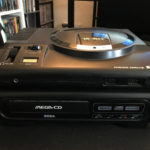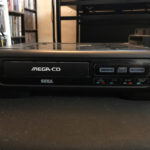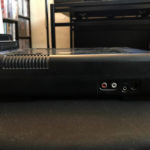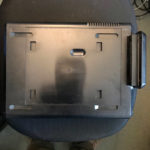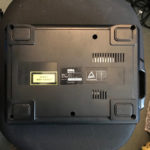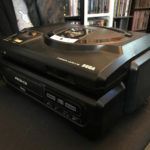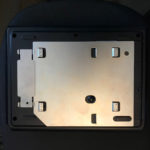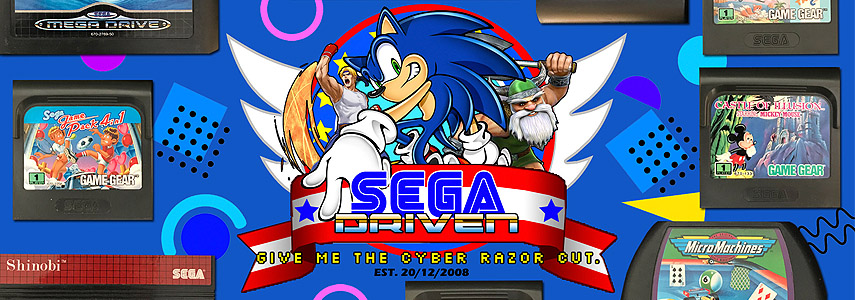SEGA Mega-CD/SEGA CD
The SEGA Mega-CD (or SEGA CD in North America), is the first add-on console designed for use in conjunction with a SEGA Mega Drive. This console features enhanced graphical and audio capabilities compared to the Mega Drive and its software is distributed on the CD-ROM format – a first for SEGA. Using CD-ROMs was chosen specifically for greater storage and was significantly more cost effective than producing ROM cartridges.
The Mega-CD connected to a Mega Drive through its edge connector which slides into an expansion slot on the top of the console. The console was also bundled with metal plates that can be fixed to the underside of a Mega Drive to give it better stability on top of the Mega-CD. The Mega-CD also requires its own power adapter. Mega-CD software largely benefited from 2 major enhancements: redbook audio and video playback through use of encoders like Cinepak. These 2 enhancements saw the systems software library largely dominated with full motion video games like Night Trap and Road Avenger. These games would highlight the system’s video playback functionality and offer players very limited interactivity.
More traditional video game software would often use the enhanced audio to provide studio quality soundtracks. The video playback capabilities would often be used to add cinematics like introduction sequences and cut scenes to games. The Mega-CD’s enhanced graphical capabilities could also be used for scaling and rotation of graphical elements which can be seen in software like Sonic CD and Soulstar.
The Mega-CD also features dedicated RCA pin jacks to allow for stereo sound output to an external device like a hi-fi system. This can be used in tandem with an original Mega Drive through use of a dedicated patch cable that connects the Mega Drive’s headphone jack with the RCA pin jacks. This cable is not needed for use with a Mega Drive II.
CD-ROMs are not the only format supported by the Mega-CD. CD+G discs are also supported. These discs were often used with karaoke systems to provide subtitles for the music they contained. This feature was largely used in conjunction with the Japan-only Mega-CD Karaoke unit which comes bundled with a microphone and connects to the Mega-CD via its RCA pin jacks.
The Mega-CD also features an internal battery which would allow games that supported save functionality to save progress to the system itself. This could be enhanced with use of a separately sold RAM cartridge which gave users more space for saves.
The Mega-CD launched in December 1991 in Japan, October 1992 in North America and April 1993 in Europe. The console was not a commercial success and only sold 2.24 million units by March 1996 when the console was discontinued.
Specifications
CPU
Motorola 68000 @ 12.5 MHz
Display
Progressive: 320×224, 256×224 (NTSC) or 320×240, 256×240 (PAL) pixels, 512 color palette, 61 colors on-screen
Interlaced: 320×448, 256×448 (NTSC) or 320×480, 256×480 (PAL)
Audio
Ricoh RF5C164
RAM
6 Mbit
512 Kbit to PCM waveform memory
128 Kbit to CD-ROM data cache memory
64 Kbit are allocated as the backup memory
Storage
CD-ROM discs and CD+G discs
